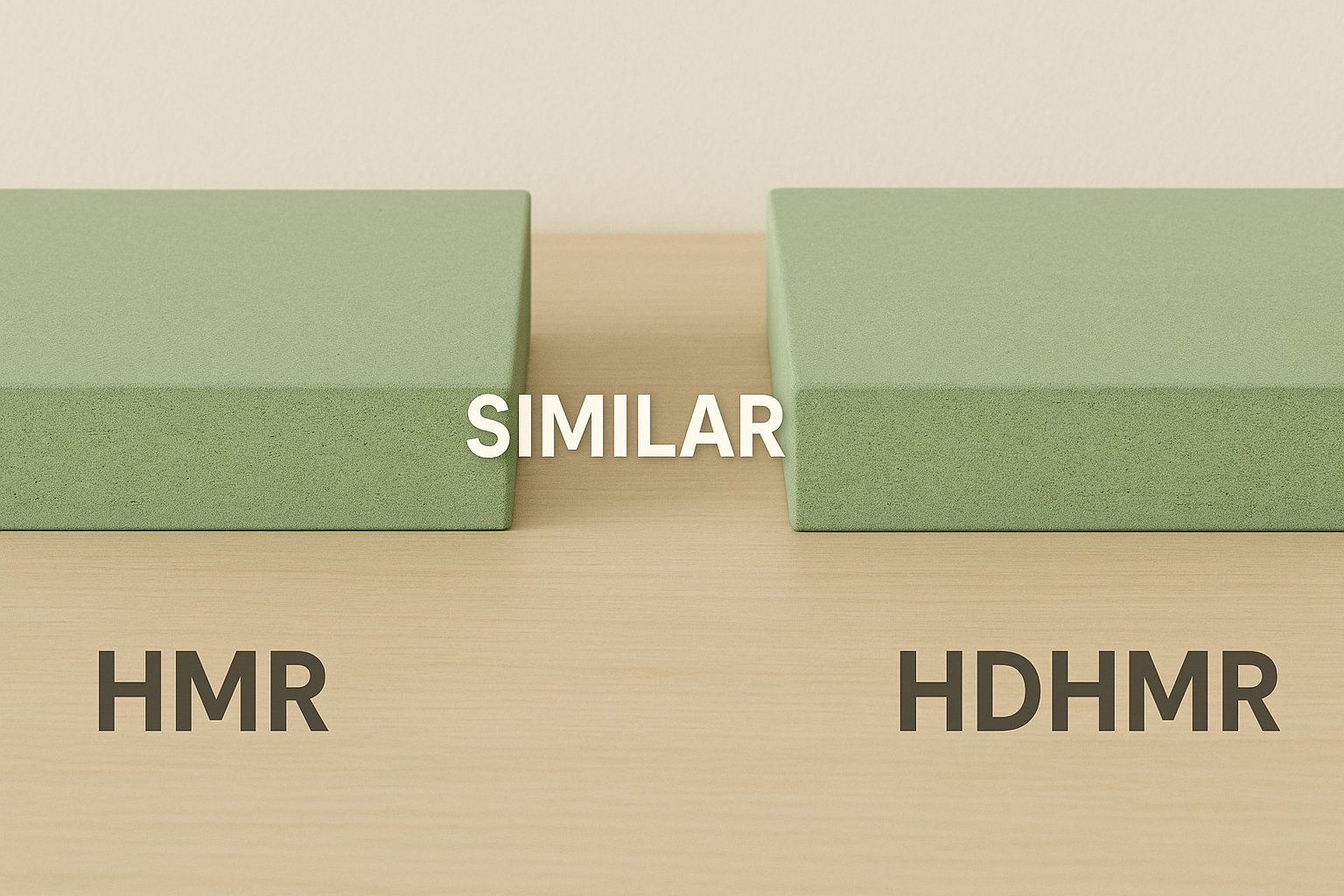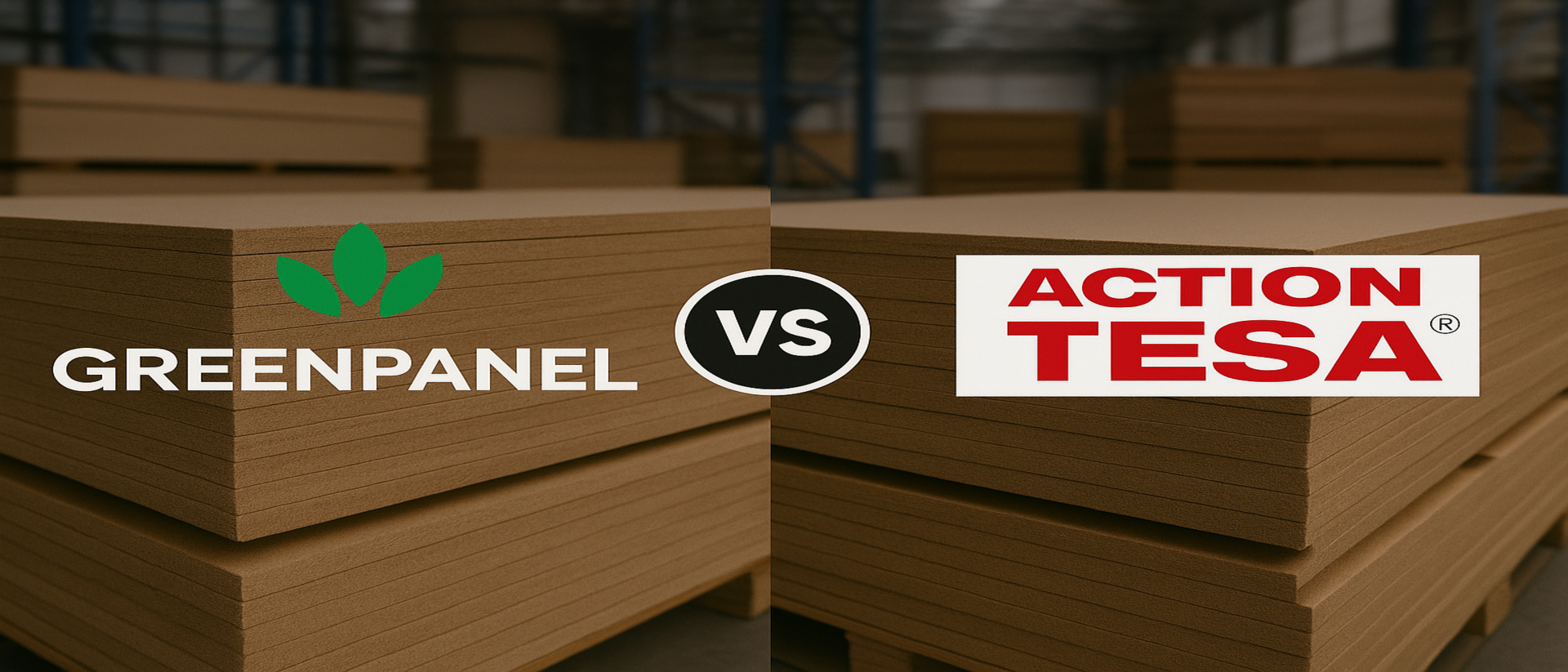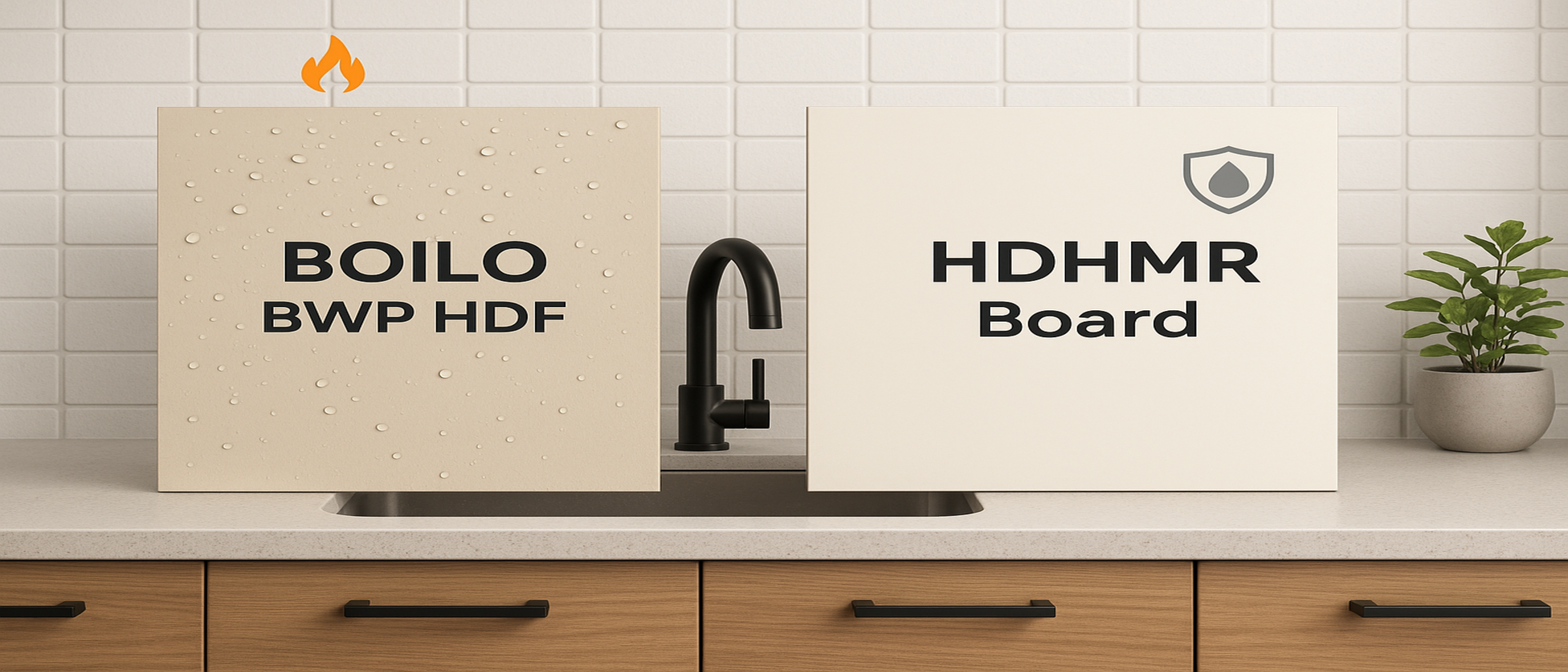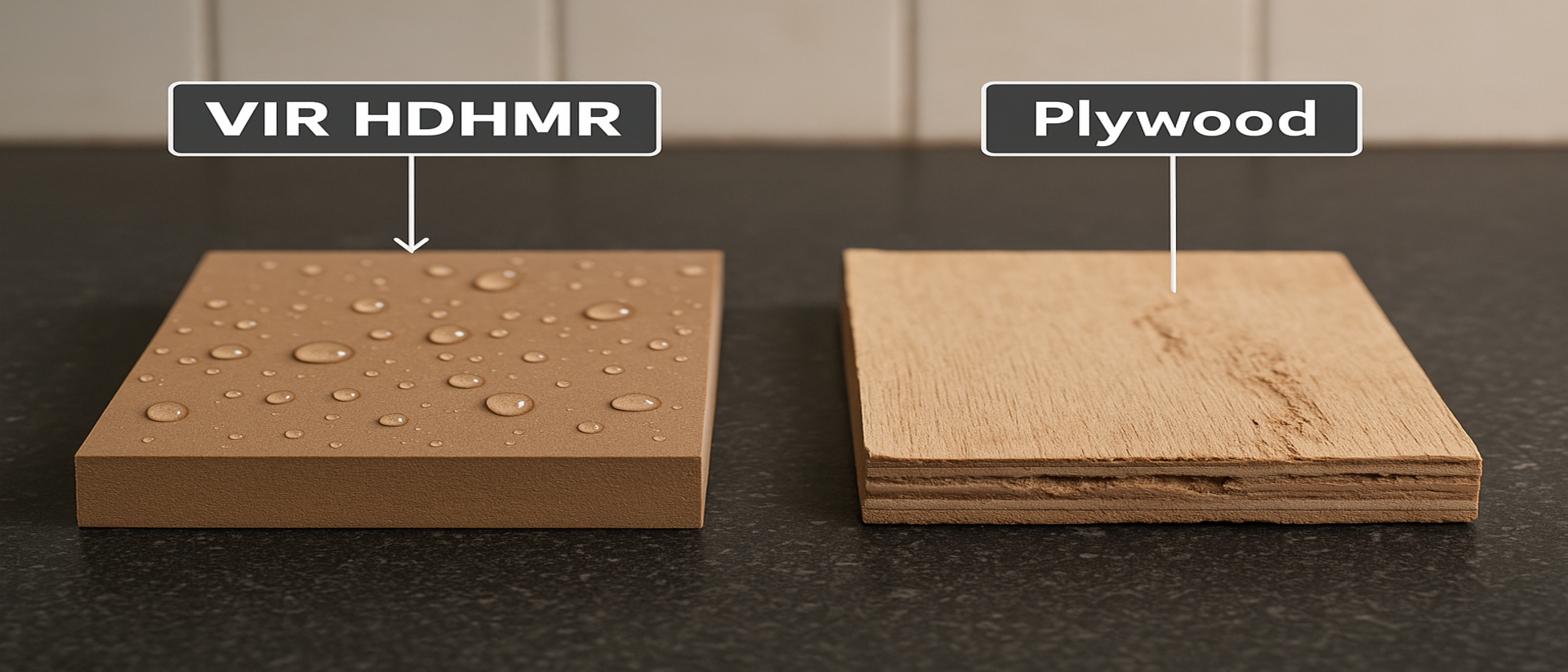Introduction
You may have seen acronyms like HMR, HDF-HMR, or HDHMR on board products. It’s easy to wonder if these are different materials. In fact, these terms all describe essentially the same engineered board. Each manufacturer uses its own label: HMR (High Moisture Resistant) often refers to moisture-resistant plywood or fiberboard, while HDHMR stands for High-Density High Moisture Resistant. We’ll explain these names and why the underlying material is similar. Understanding this helps you avoid confusion when shopping for moisture-resistant panels.
2025 Technical Specs & Labeling
· Terminology:
· HMR: Stands for High Moisture Resistant. In practice, it usually means MDF or plywood treated for improved humidity performance. An “HMR board” is basically a moisture-resistant fiberboard (often green-tinted).
· HDF-HMR: High-Density Fiberboard - High Moisture Resistant. This is the same idea as HDHMR, emphasizing both density and moisture proofing.
· HDHMR: High-Density High Moisture Resistant. Essentially a branded way to say "the highest grade of water-resistant fiberboard".
According to industry insights, these are just marketing names for a high-density, HDF-type board with water-resistant resin.
· Composition: All these boards are made from hardwood fibers combined with moisture-resistant resin (like melamine-urea) under high pressure. The process and recipe are almost identical. For example, Action TESA, Greenpanel and other brands use terms like HDHMR, HDWR, HDF-HMR, but all follow the same high-density, high-resin formulation.
· Performance Specs:
· Density is around 800–900 kg/m³ (similar to high-grade plywood).
· Moisture Resistance: Very high (boards typically absorb only ~3% water after 24h immersion). This meets IS 12406 “boiling water resistant” standards for interior use.
· Screw Retention: Excellent – one test showed face screw withdrawal of 2250 N for HDHMR (much higher than MDF).
Essentially, whether a board is labeled HMR or HDHMR, the technical qualities are equivalent – strong, dense, and water-resilient.
Strengths & Weaknesses of HMR/HDHMR
· Strengths: Both HMR and HDHMR offer top-tier moisture resistance and uniform strength throughout the panel. They are stronger and more durable than standard MDF/HDF. Their smooth surface is ideal for laminates or veneers. They hold screws firmly and resist warping.
· Weaknesses: Because manufacturers may use different names, the only real “weakness” is potential confusion. Some lower-grade boards might still carry the HMR label without meeting full HDHMR specs, so always check technical data (look for ISI certification or density). Otherwise, HDHMR boards can be heavy and slightly more costly due to their quality.
Durability & Moisture Resistance
All HMR/HDHMR boards are made to resist humidity. In controlled tests, HDHMR boards showed minimal swelling (around 1–3%) after soaking. This means kitchen cabinets or bathroom panels made from these boards remain unaffected by steam or occasional spills. Durability is high: HDHMR is often recommended over ordinary plywood because of its longevity in humid environments. Since HMR boards are compositionally the same, you can expect the same durable performance. In practical terms, a labeled “HMR board” should protect your furniture just like an HDHMR board would.
Applications / Best Use Cases
Since HMR and HDHMR are essentially identical in function, their uses overlap:
- Kitchens & Bathrooms: Both are ideal for cabinetry and fixtures in wet areas. They won’t swell like MDF or regular plywood.
- Laundry & Utility Rooms: Anywhere with steam or humidity benefits from these boards.
- Doors & Partitions: They are stable under changing humidity, so they work well for interior doors and wall panels.
- Furniture: Use them for wardrobes, shelves, and study desks where moisture or strength is a factor.
Think of “HMR vs HDHMR” more as brand vs generic than a performance question. For your project, any high-grade HMR or HDHMR board (8-12mm for shelves, 12-18mm for cabinets) will serve you well in wet conditions.
Cost Analysis & Value for Money
Pricing between HMR and HDHMR boards is typically identical. Both command a premium over standard MDF or plywood due to the added processing. In India 2025, expect ₹80–120/sqft for a quality HMR/HDHMR board (like Greenpanel or Century Ply’s HDHMR). You won’t find HDHMR significantly cheaper or more expensive than HMR-labeled boards of the same grade. The extra cost over regular boards is justified by their longevity; as one expert notes, paying a bit more for HDHMR “pays off with furniture that survives and thrives”. In other words, invest in true HMR/HDHMR when moisture resistance is needed – it’s worth the price compared to the cost of damage to cheaper materials.
Buyer’s Checklist: Which to Choose?
· Check Labels: Don’t get hung up on HMR vs HDHMR acronyms – focus on specifications (density, water absorption). Look for boards with certified moisture-grade (BWR/BWP) to ensure quality.
· Project Needs: For kitchen/bathrooms, only consider genuine moisture-resistant boards (either HMR or HDHMR). For standard indoor furniture, you could use plain HDF/HDF-MR if cost is a concern.
· Thickness: Choose board thickness based on load. 12–18mm is common for cabinets; 6–12mm for doors or lightweight panels. All HMR/HDHMR boards will be rated similarly by thickness.
· Brand/Source: Some manufacturers might market HDF-HMR or HDHMR; others say HMR plywood. Reputable brands ensure proper moisture-resistant resin. If in doubt, ask if it meets IS 12406 HDF-HMR standards.
· Finishing: Both accept laminates/veneers. If gluing PVC or painting, either will do. Just ensure edges are sealed (even HDHMR edges can absorb a little water if uncoated).
FAQs
Q1: Is HMR the same as HDHMR?
In practice, yes. “HMR” means High Moisture Resistant, and most HMR boards are high-density fiberboards similar to HDHMR. HDHMR explicitly spells out “High Density, High Moisture Resistant.” They are the same wood fiber + resin composition. Any board labeled HMR/HDF-HMR/HDHMR is built to resist moisture, so treat the terms as interchangeable.
Q2: Why do some boards say HDF-HMR?
HDF-HMR stands for High Density Fiberboard – High Moisture Resistant. It’s a marketing term for HDHMR. It emphasizes that the board is both high-density (like HDF) and moisture-resistant. Again, it’s essentially the same product as HDHMR.
Q3: Can I use HMR board in place of HDHMR?
Yes. If a board is certified high-moisture resistant (often green-core), you can use it wherever HDHMR is recommended. For example, HMR plywood (with a moisture-resistant core) will perform like HDHMR in cabinets. The key is to ensure quality – a cheap board labeled HMR may not meet the same standards.
Q4: Are these boards good for outdoor use?
Not typically. HMR/HDHMR boards are designed for indoor wet areas. They resist humidity but are not rot-proof like true exterior materials. For occasional splash (like a covered porch ceiling), they’re fine; for full outdoor exposure (rain, ground contact), use specialized marine or exterior-grade products.
Q5: How do I identify a genuine HMR/HDHMR board?
Look for distinguishing marks: a green core or a label saying “HMR” or “BWR/BWP grade”. Check the technical datasheet: HMR/HDHMR should have low water absorption (often listed <10% after 2h soaking) and meet IS 12406 specs. If it’s from a known brand (Century, Action TESA, Greenpanel, etc.), it’s likely genuine.
Q6: Is HDF the same as HMR?
No, HDF is just a high-density fiberboard and may not be moisture resistant unless labeled HMR. HDF by itself will swell like MDF if wet. Only if HDF is made to HMR specifications (HDF-HMR) does it compare to HDHMR.
Conclusion
“HMR board” and “HDHMR” are really different names for the same core material. All these boards are high-density fiberboards with moisture-proof resin. For practical purposes: if a panel is labeled HMR (or HDF-HMR/HDHMR), you can treat it as an HDHMR board. Choose such boards whenever you need moisture resistance (kitchens, bathrooms, humid climates). When shopping, focus on product specs, not just terminology – a good HMR board is just as effective as HDHMR. For more details or to source authentic HDHMR/HMR boards, get in touch with us – we’ll help you clear up any confusion and select the right board for your needs.
Disclaimer: This article is generated using AI-assisted research and is intended for informational purposes only. While we strive for accuracy, readers are advised to verify all technical, pricing, and brand-specific details with official sources. hdhmr.in is not liable for any decisions made based on this content.




